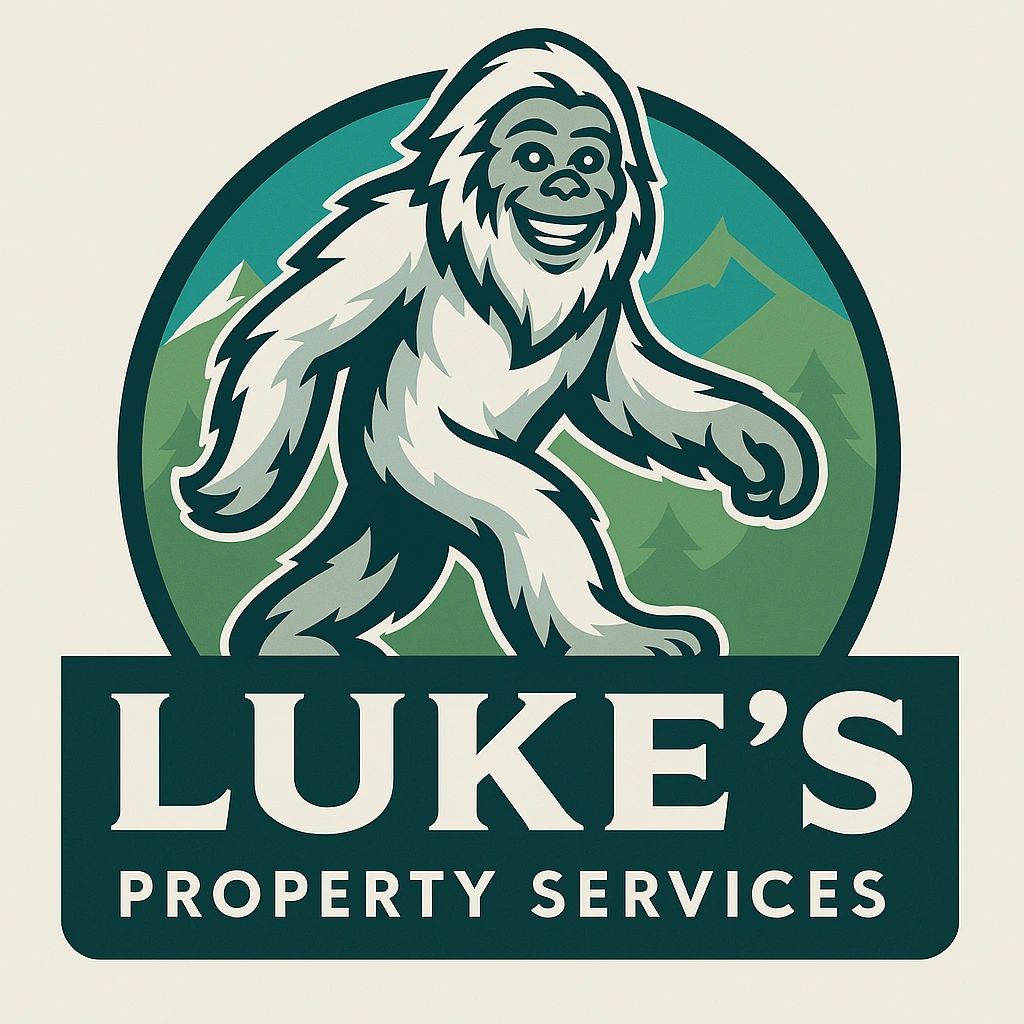- Retirement Examined
- Posts
- Retirement Examined
Retirement Examined
5-Minutes of Breakthrough Secrets: Happy, Fulfilling Retirement

The weekly email that keeps you up to date on exciting Retirement topics in an enjoyable, entertaining way for free.
The Greatest Loophole Left Standing: Why Life Insurance Is the Most Powerful Tax Shelter in America
by Eric Seyboldt, MBA

Tucked deep inside the U.S. tax code lies a provision so potent, so enduring, and so underappreciated that it quietly props up some of the most sophisticated wealth transfer strategies ever devised. It’s not a deduction, nor a credit. It’s the full and permanent income tax exemption on life insurance death benefits. And unlike other tax benefits that Congress loves to trim or phase out, this one has stood the test of time.
This isn’t just about estate planning—it’s about economic leverage. And no serious financial strategist overlooks it.
A Product Born in Crisis, Refined by Capitalism
Life insurance has its roots in community burial funds in ancient Rome, but its modern American form was born in the crucible of colonial hardship. The Presbyterian Ministers’ Fund of 1759 provided life insurance to clergy families, serving as both moral mission and practical necessity. By the late 19th century, it had become a financial staple for both middle-class families and captains of industry, evolving from a modest safety net into a sophisticated tool of capital preservation.
Then came the IRS. In the 20th century, as the income tax was enshrined into law, Congress carved out a peculiar and enduring gift: Section 101(a) of the Internal Revenue Code, which declares that death benefits from a life insurance policy are not subject to income tax. The logic was simple—death is taxing enough.
But in practice? That single line of code created the ultimate tax shelter.
The Tax Code’s Last Fortress
Here’s how it works. A wealthy individual purchases a permanent life insurance policy, often inside an Irrevocable Life Insurance Trust (ILIT). They pay premiums with post-tax dollars, but upon death, the policy pays out tax-free—often tens of millions—to beneficiaries. These dollars can be used to pay estate taxes, protect illiquid assets (like real estate or a family business), or pass down wealth discreetly.
Let’s run the numbers. Say a business owner has $15 million in real estate and company stock, and dies unexpectedly. Without liquidity, their heirs could be forced to sell assets under pressure to pay estate taxes. But with a $6 million life insurance policy in an ILIT, the family receives immediate, untaxed liquidity—no panic sales, no fire-sale discounts, and no IRS taking a bite out of the payout.
Or take the case of a high-net-worth couple nearing retirement. They’ve maxed out traditional tax-advantaged retirement plans. By structuring a properly designed permanent life insurance policy, they can grow cash value tax-deferred, borrow against it tax-free, and still pass on a large tax-free death benefit. When designed properly, it becomes a tax-free investment, a pension supplement, and a generational legacy tool all in one.
The Taxman’s Blind Spot—And Why It’s Still Legal
In 1988, Congress tried to rein in abuses through the Modified Endowment Contract (MEC) rules. These provisions prevent individuals from stuffing too much cash into policies just for tax-deferred growth. But even with MEC rules, the death benefit remains tax-free.
Despite decades of tax reform and “fairness” talk, the life insurance exemption has survived untouched. Why? Because it’s too useful. Too many voters, business owners, and institutions rely on it. And unlike 401(k)s or Roth IRAs, there’s no income limit, no phase-out, no cap. If you can afford the premiums, you can play the game.
The Final Word
In an era when financial tools rise and fall with political winds, the life insurance exemption has become a fortress in the storm. It’s the tax code’s equivalent of a diamond—pressure-tested, quietly priceless, and passed down through generations.
To call it a loophole is to undersell it. It’s a legal superpower, and it’s hiding in plain sight. For the financially literate, it is not merely a tool—it is the strategy. Every serious wealth plan, every sophisticated estate strategy, ultimately runs through this one provision.
Ignore it at your peril. Or better yet—learn to wield it.
Reach out to us for a complimentary, 10-minute consultation call. Let's explore strategies to protect your wealth and make your retirement everything you've dreamed of—secure, fulfilling, and worry-free. Schedule a free 10-minute consultation today by calling 614-943-2265. Your future deserves the best plan, and we're here to help make it happen.
Apple’s Starlink Update Sparks Huge Earning Opportunity
Apple just secretly added Starlink satellite support to iPhones through iOS 18.3.
One of the biggest potential winners? Mode Mobile.
Mode’s EarnPhone already reaches +45M users that have earned over $325M, and that’s before global satellite coverage. With SpaceX eliminating "dead zones" worldwide, Mode's earning technology can now reach billions more.
Mode is now gearing up for a possible Nasdaq listing (ticker: MODE) but you can still invest in their pre-IPO offering at $0.30/share before their share price changes.
*An intent to IPO is no guarantee that an actual IPO will occur. Please read the offering circular and related risks at invest.modemobile.com.
*The Deloitte rankings are based on submitted applications and public company database research.

by Eric Seyboldt, MBA
Client: "Eric, I’m 63 and thinking about retiring soon. But I keep hearing horror stories about people running out of money, especially if they get sick or end up in assisted living. Is that really something I should be worried about?"
Eric: “It’s not only something you should worry about—it’s something you must plan for, because that fear is more than justified. But with the right structure, it can be neutralized. Completely.
Let’s break this down.
The most common retirement nightmares are not rooted in fantasy—they’re rooted in unaddressed probabilities. Healthcare costs, long-term care, and outliving one’s savings are not rare events—they’re likely events. And yet, they’re the least planned for.
The Budget Fear: “What if I get sick?”
Every year, hundreds of thousands of retirees are blindsided. Medicare doesn’t cover assisted living. It doesn’t pay for home health aides. It doesn’t cover memory care. The average cost of long-term care is now:
$61,000/year for in-home care
$90,000/year for assisted living
$110,000/year for a private room in a nursing home
And the average stay? Three years.
That’s a potential $250,000+ event, with no insurance to absorb the impact unless it was purchased in advance.
The Solution: Layered Protection & Asset Segmentation
The smart retiree doesn’t gamble on good health. The smart retiree pre-funds the worst-case scenario. Here’s how.
Step 1: Create a "Long-Term Care Reserve"
Allocate a portion of the portfolio (often 10–20%) to a hybrid long-term care insurance policy. These are either:
Life insurance policies with a long-term care rider
Annuities with LTC benefits built in
These tools are designed for one purpose: to trigger payouts if the retiree requires care, while ensuring that if care is never needed, the policy still holds cash value or provides a death benefit to heirs.
Why this works: The fear isn’t just needing care. It needing care and depleting every dollar just to survive. Hybrid LTC guarantees that funds are earmarked only for that scenario.
Step 2: Build a “Lifestyle Protection Bucket”
Segment retirement assets into three parts:
Years 1–5: Safe cash, CDs, short-term bonds. No volatility.
Years 6–15: Balanced funds, dividend-paying stocks, conservative growth.
Year 16+: Equity growth, real estate income, inflation hedges.
This approach ensures that retirees always have accessible funds for lifestyle needs, while still letting long-term assets grow. It’s a time-based firewall against panic selling.
Step 3: Add Income Flooring
Use a portion of assets to buy an inflation-adjusted annuity or structured income product to guarantee income for life. Combined with Social Security, this creates a “floor” that covers essential costs, regardless of market swings or medical bills.
REAL-LIFE EXAMPLE: Meet Richard and Denise
Richard (67) and Denise (64) were preparing to retire from corporate careers. Their biggest fear? Richard’s father spent 4 years in memory care at $9,000/month. They didn’t want to burden their children or sacrifice the lifestyle they worked 40 years to enjoy.
Here’s how they solved it:
$200,000 of their $1.5M nest egg was placed into a hybrid life insurance policy with a long-term care rider. If either needs care, it pays up to $7,500/month for 6 years, tax-free. If never needed, their heirs receive $500,000 tax-free.
They placed $400,000 into laddered index annuities, structured to deliver income for the next 10 years.
The rest was allocated to a growth portfolio and a deferred annuity to kick in at age 80, guaranteeing an extra $30,000/year in income for life.
The Result: Their essential expenses are covered by Social Security and annuity income. Healthcare fears are neutralized by the hybrid LTC plan. And market downturns won’t affect their ability to live or pay for emergencies.
Eric’s Final Word: Retirements Fail Because of Events, Not Math
The fear of running out of money is not irrational—it’s historical. Millions have done just that because they never prepared for healthcare’s financial wrecking ball. But the good news?
This is solvable. Mathematically. Strategically. Permanently.
When retirees shift from hope-based budgeting to event-based planning, fear dies and control returns. And the most dangerous retirement risk—the unknown—becomes just another line item on a spreadsheet.
Let the rest of America fear the storm. The prepared retiree sails through it—because they planned for the lightning before the sky even darkened.”
Contact us for a free, brief 10-minute consultation. Take control of your retirement before uncertainty takes control of you. Call 614-943-2265 to schedule a free 10-minute consultation and learn how to safeguard your wealth, your lifestyle, and your legacy. Your future deserves more than guesswork—it deserves a plan built to endure.
🧼 Ohio’s Most Trusted Name in Power Washing
Is your home’s curb appeal fading fast? You’re not alone—and there’s never been a better time to bring it back to life.
Right now, Luke’s Property Services is offering 10% OFF all power and soft washing services—but only for a limited time (April 15 - May 30th)! Whether it’s your siding, driveway, patio, deck, sidewalk, or walkway, they’ll wash away years of grime and mold in a single visit.
🏠 Before and after? Like night and day.
💧 Equipment? Commercial-grade and eco-friendly.
💪 Results? Shockingly clean—and they speak for themselves.
✅ Trusted by homeowners across Central Ohio
✅ Fast, professional, and always reliable
✅ No-pressure, free quotes — just text or call!
📞 Call or Text Luke’s Property Services Today: (614) 531-6979
Deep cleaning siding, roofs, patios, driveways, walkways, decks, and more. Residential or Commercial.

Fixed annuities can be an essential component of a well-rounded retirement strategy, offering security, predictability, and efficiency in financial planning.
These are current fixed annuity rates and their durations from Top A-rated carriers (subject to change at any time, not FDIC insured):
Rates Just Dropped! Don’t Wait To Lock These Fixed Annuity Rates In Today Before They Fall Any Further!
3-year: 5.00% (under $100k Deposited)
3-year: 5.35% (over $100k Deposited)
5-year: 5.60% (under $100k Deposited)
5-year: 5.65% (over $100k Deposited)
7-year: 5.65% (under $100k Deposited)
7-year: 5.95% (over $100k Deposited)
Please feel free to call Eric at 614-943-2265 if you’d like to ask any questions or request information on these fixed annuities or other retirement topics that are on your mind.

“The purpose of life is not to be happy. It is to be useful, to be honorable, to be compassionate... to have it make some difference that you have lived and lived well.”
Ralph Waldo Emerson

Ralph Waldo Emerson
REAL ASSETS, Invest Like the Ultra-Wealthy

Invest Like the Ultra-Wealthy: Why Smart Money Is Flocking to Real Assets Like Gold—and Even Bourbon
Let’s be blunt: the old playbook for protecting retirement is broken. Inflation is creeping higher. The dollar is losing its punch. Central banks are printing money like it’s Monopoly night. And markets? As unstable as ever.
That’s why the savviest investors aren’t just watching the storm—they’re preparing for it.
They’re moving into real assets—tangible, inflation-resistant investments that don’t vanish when the market sneezes. We’re talking about gold. We’re talking about bourbon barrels. Yes, bourbon. The same elite-class asset quietly making millionaires in private circles.
These aren’t just collector’s items. They’re financial armor—hard assets that hold their ground when stocks crater and paper wealth evaporates.
And it’s not just a hedge—it’s a strategy.
📌 Gold has withstood centuries of financial upheaval.
📌 Bourbon barrels are aging assets with built-in appreciation and rising global demand.
📌 Physical assets provide something no stock ever can: ownership you can see, touch, and trade on your terms.
During market chaos, real assets don’t flinch. They thrive. History proves it. While equities tumble, hard assets often surge—shielding portfolios and delivering asymmetric returns when they're needed most.
And even in calm times? They add powerful diversification. That’s why the ultra-wealthy use them as a cornerstone—not a sideshow—in their wealth strategy.
Ask yourself:
🧠 Are you truly diversified?
🧠 What happens to your retirement if inflation stays elevated?
🧠 If the dollar weakens, what asset in your portfolio gets stronger?
If you don’t have a good answer, it’s time for a new conversation.
Allocating funds into the asset class known as “Real Assets” may be a strategy that you should consider.
Ask us how to Rollover a portion of Your IRA or 401k To A BOURBON IRA (www.bourbon.fund/how-it-works/) or a GOLD IRA (see link below) and:
Safeguard your assets from the collapsing dollar
Incorporate the ‘REAL ASSET’ class into your portfolio like the ultra-wealthy
Hedge against the current high-inflation conditions
Protect your retirement assets against economic crises
Just get in touch. We make it easier than ever.
CONNECT WITH US

Eric Seyboldt, MBA
Feedback or Questions?
You’re invited to get in touch with us if you’d like to find out how the Novus Financial Group can help you on your journey to a happy, fulfilling life in Retirement.
Office: 614-943-2265
Feel Free To Forward Retirement Examined To A Friend and Have Them Subscribe By Clicking The Button Below:
Reach out if you’d like to advertise your business on Retirement Examined or would like to be a sponsor.
Investment advisory services are offered by duly registered individuals on behalf of CreativeOne Wealth, LLC a Registered Investment Adviser.
The content we provide here isn’t financial advice and cannot be taken as such. Please speak to your financial advisor before making any investment decision. Also, note that every investment comes with its risks and drawbacks. Lastly, we would like to remind you that past results cannot guarantee future returns.
This website contains one affiliate link. When you click on the link and make a purchase, we may receive a commission at no additional cost to you. We only promote companies that we have personally used or researched and believe will add value to our readers



